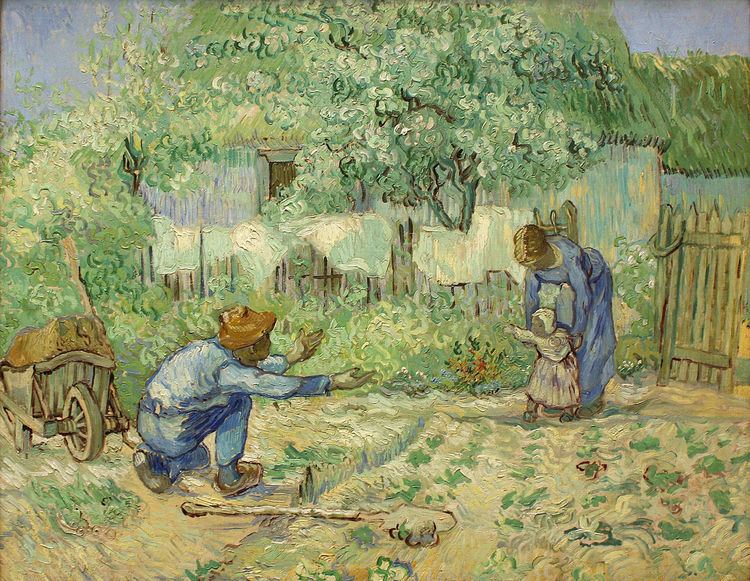 | ||
A toddler is a child 12 to 36 months old. The toddler years are a time of great cognitive, emotional and social development. The word is derived from "to toddle", which means to walk unsteadily, like a child of this age.
Contents
Developmental milestones
Toddler development can be broken down into a number of interrelated areas. There is reasonable consensus about what these include:
Although it is useful to chart defined periods of development, it is also necessary to recognize that development exists on a continuum, with considerable individual differences between children. There is a wide range of what may be considered 'normal' development.
One year old
At one year of age, the typical toddler will be able to display the following skills:
Physical and motor skills
Sensory and cognitive development
Two years old
Two and half years old
14 months
18 months
Two years
15 months
18 months
Two years
2½ years
Toilet training
- Psychological readiness
- Process training
- Parental response
Play (parallel play)
Games: throwing and retrieving objects
Suggested toys:
Squatting
Young children squat instinctively as a continuous movement from standing up whenever they want to lower themselves to ground level. One- and two-year-olds can commonly be seen playing in a stable squatting position, with feet wide apart and bottom not quite touching the floor, although at first they need to hold on to something to stand up again.
Language
Talking is the next milestone of which parents are typically aware. A toddler's first word most often occurs around 12 months, but again this is only an average. The child will then continue to steadily add to his or her vocabulary until around the age of 18 months when language increases rapidly. He or she may learn as many as 7–9 new words a day. Around this time, toddlers generally know about 50 words. At 21 months is when toddlers begin to incorporate two word phrases into their vocabulary, such as "I go", "mama give", and "baby play". Before going to sleep they often engage in a monologue called crib talk in which they practice conversational skills. At this age, children are becoming very proficient at conveying their wants and needs to their parents in a verbal fashion.
Emotions and self-image
There are several other important milestones that are achieved in this time period that parents tend not to emphasize as much as walking and talking. Gaining the ability to point at whatever it is the child wants you to see shows huge psychological gains in a toddler. This generally happens before a child's first birthday.
This age is sometimes referred to as "the terrible twos", because of the temper tantrums for which they are famous. This stage can begin as early as nine months old depending on the child and environment. Toddlers tend to have temper tantrums because they have such strong emotions but do not know how to express themselves the way that older children and adults do. They also throw tantrums to let others know that they are free and can do what they want. The toddler is discovering that they are a separate being from their parent and are testing their boundaries in learning the way the world around them works. Although the toddler is in their exploratory phase, it is also important to understand that the methods used by the parents for communicating with the toddler can either set off a tantrum or calm the situation. Research has shown that parents with histories of maltreatment, violence exposure, and related psychopathology may have particular difficulty in responding sensitively and in a developmentally appropriate manner to their toddlers' tantrums and thus may benefit from parent-child mental health consultation. This time between the ages of two and five when they are reaching for independence repeats itself during adolescence.
Self-awareness is another milestone that helps parents understand how a toddler is reacting. Around 18 months of age, a child will begin to recognize himself or herself as a separate physical being with his/her own thoughts and actions. A parent can test if this milestone has been reached by noticing if the toddler recognizes that their reflection in a mirror is in fact themselves. One way to test this is the rouge test: putting lipstick on the child's face and showing them their own reflection. Upon seeing the out-of-the-ordinary mark, if the child reaches to his or her own face, the child has achieved this important milestone. Along with self recognition comes feelings of embarrassment and pride that the child had not previously experienced.
Overview
The toddler developmental timeline shows what an average toddler can do at what age. Times vary greatly from child to child. It is common for some toddlers to master certain skills such as walking well before other skills, like talking. Even close siblings can vary greatly in the time taken to achieve each key milestone.
